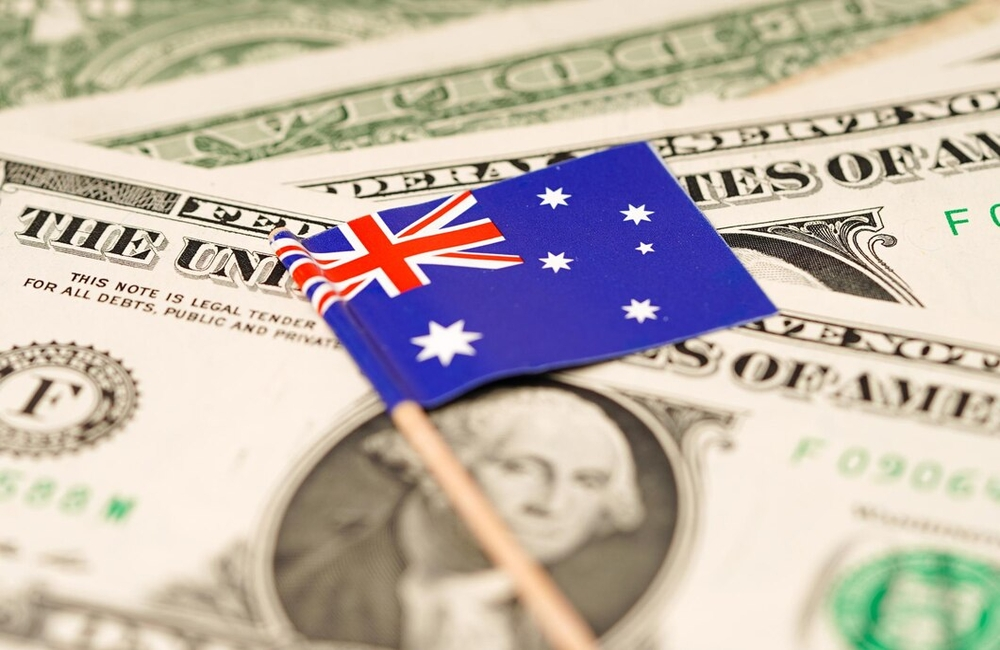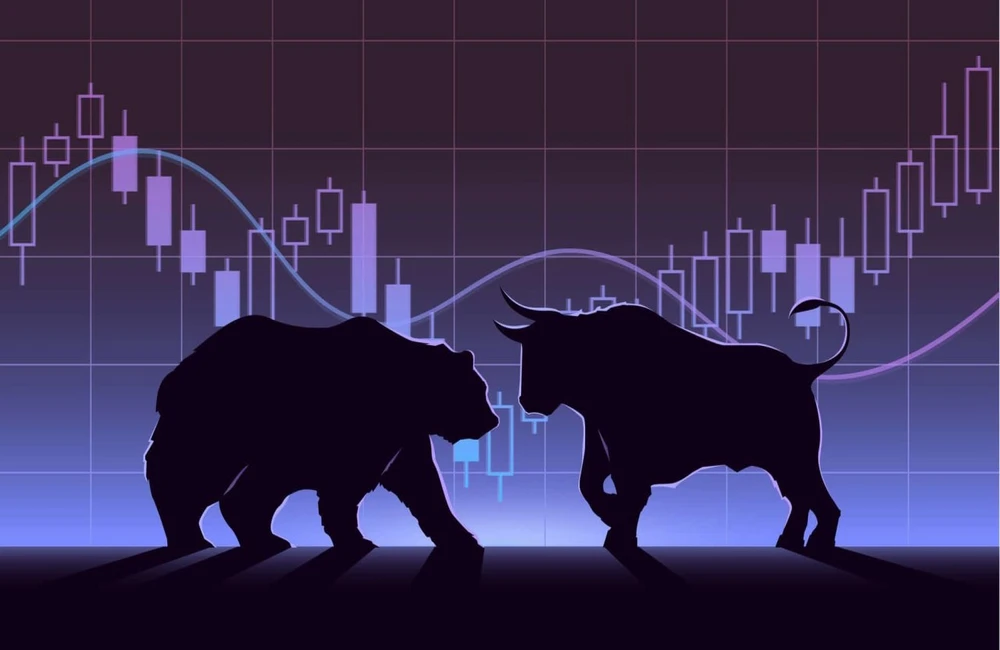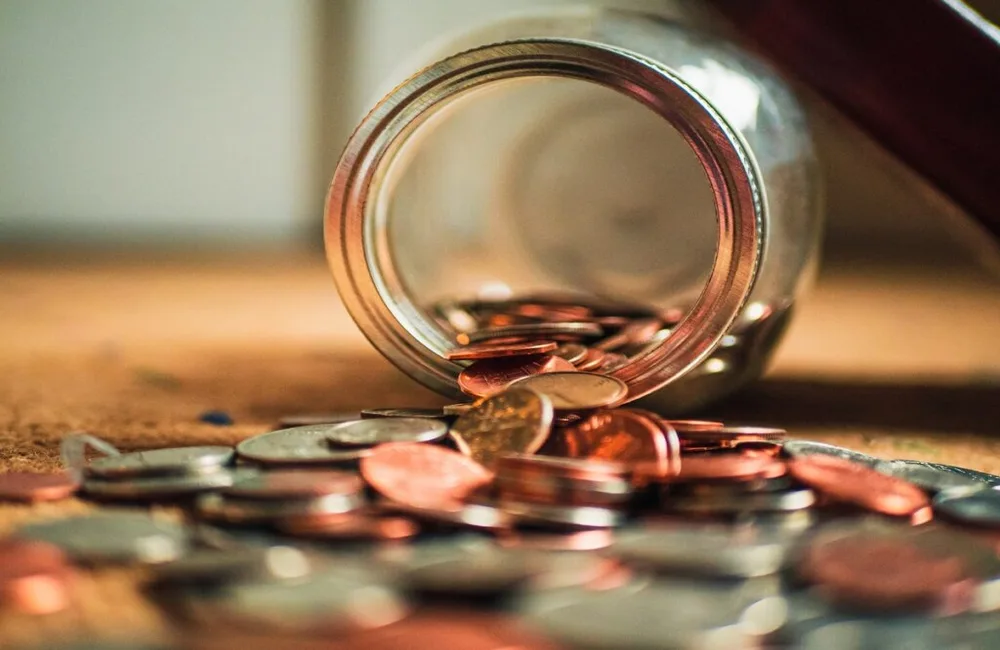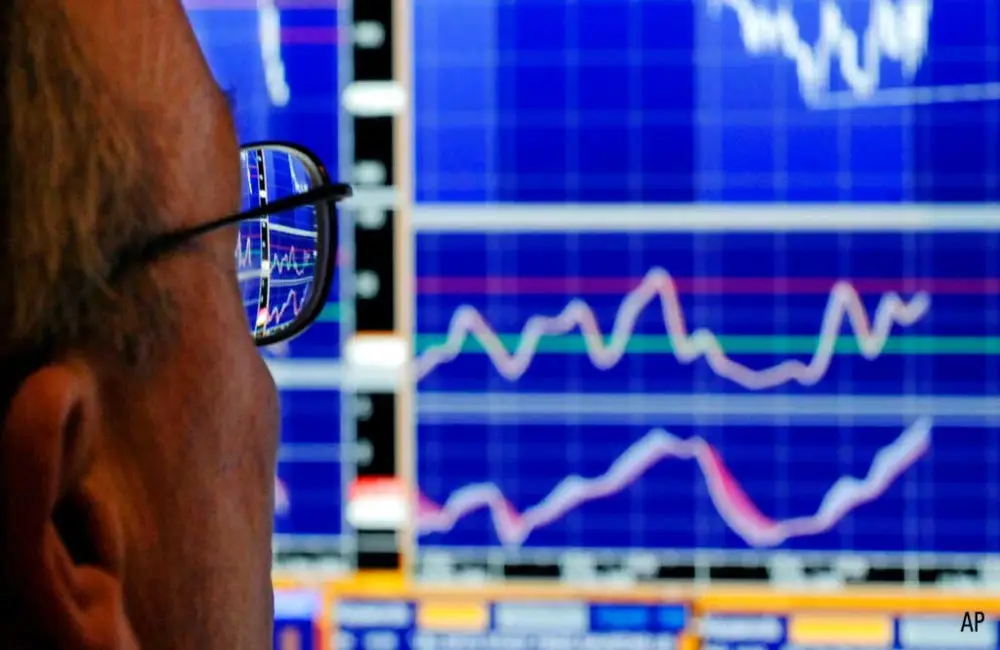At 8.00 am on Wednesday, indicating good news for the start of the day/s.
Overseas, the S&P 500 rose 2 percent, a day after ending with a modest loss. The Dow Jones Industrial Average climbed 1.3%. The Nasdaq Composite surged 2.8%, recovering after dropping 1.2 percent on Monday. The tech-heavy index lifted by the over 4% gain in Amazon and Tesla.
(Graphic: US retail and food service sales in April - https://tmsnrt.rs/38gUG3W) The flow of fresh data on Tuesday also pointed to some economic resilience, with US shoppers increasing retail spending in April for the fourth straight month, according to data from the Commerce Department. That, along with the reopening of some stores in Shanghai this week after a stringent Covid-19 lockdown, offered some grounds for optimism.
Stocks briefly cut gains Tuesday afternoon after Fed Chairman Jerome Powell sounded resolute in combating inflation, but indexes climbed back toward new session highs. “There may be some pain involved” in bringing about price stability, Mr. Powell said.
“I think whether good or bad, this is a pattern we see often in bear markets,” said Andrew Sheets, chief cross-asset strategist at Morgan Stanley. “You do get reversals that are very common that happen.” ..and to trade, I think that’s difficult.”
Locally, the S&P/ASX 200 added 0.3% to close at 7112.5, with commodity and financial stocks lifting the benchmark for a third straight gain.
The index shrugged off weakness in US stocks to continue its recovery from last week’s selloff that brought it a fourth straight weekly loss.
Iron ore miners such as BHP, Rio Tinto and Fortescue added 0.55% to 2.3%, while shares of lithium miners rose even more. Whitehaven Coal rose 5.9 per cent to a record $5.20 as its share buyback progresses.
Energy explorers Santos, Woodside and Beach gained 2.0% to 6.1% each on higher oil prices, while the banks ANZ, Westpac, NAB and Commonwealth rose between 0.1% and 1.7%.
Brambles surrendered two-thirds of the gains it made on Monday after the global pallet empire said it will not receive a takeover offer from European private equity behemoth CVC Capital Partners, after all, "on account of current external market volatility".
The tech sector fell 0.8% after gaining 9.2% the previous two sessions.
Job search company Seek and real estate platform realestate.com.au owner REA Group snipped a little over 4% each while former message board darling Zip slid 3.2% to a more than three year low of 92 cents. The buy now, pay later company’s shares traded as high as more than $12 in February 2021.
In commodities, Brent crude oil fell 1.3% to US$112.77 a barrel. Iron ore was up US$2.85, or 2.2%, to US$130.15. The price of gold advanced 0.3% to US$1818.90.
Davey on the ground, Nomura: Local bonds softened Tuesday, with the AUD 2 Year struck at 2.55%, while the 10 Year rose to 3.40%. The same pattern was observed overseas and yields on US Treasury 2 Years rose to 2.70%, and the 10 Year climbed to 2.99%.
As of 7.00 am on Wednesday, compared with 69.69 US cents at the previous close. The Wall Street Journal Dollar Index, which measures the US dollar against 16 other currencies dropped to 95.79.
Asia
China stocks closed the session higher, making up for losses made on Monday when officials published weak April retail sales data. The benchmark Shanghai Composite Index gained 0.6% to close at 3093.70, and the Shenzhen Composite Index added 0.7% to 1940.05. The technology-heavy ChiNext Price Index added 1.6% to close at 2369.09. Auto companies drove the move higher, mirroring the sector’s surging momentum in Hong Kong, with analysts increasingly growing more upbeat on the sector’s recovery from the resurgence of Covid-19 in China.
In Hong Kong the Hang Seng Index finished 3.3% higher at 20602.52, helped by regional rallies. Investor sentiment also may have brightened on news that Shanghai’s Covid-19 cases appear to have peaked and the city is set to emerge from its lockdown June 1, says KGI Securities analyst Chua Tit Hong in a note. Among the gainers were lens maker Sunny Optical, which jumped 13%, and Geely Automobile, advancing 8.8%. Shares in technology also gained, led by Alibaba Health Information Technology, which rose 7.5 percent. Decliners included Country Garden Holdings, down 1.0%.
Japanese stocks rose, boosted by energy and shipping stocks, aided by optimism for further economic recovery from the Covid-19 pandemic and the end of the lockdown in Shanghai. Oil explorer Inpex rose 5.6% and top shipper Nippon Yusen added 3.7%. The Nikkei Stock Average gained 0.4% to 26659.75. Investors are eyeing moves in the yen and crude-oil prices as earnings season starts to wind down.
Europe
European markets opened higher after Asian trading was buoyed and US stocks gained earlier. The pan-European Stoxx Europe 600 as well as the French CAC 40 and the German DAX surged over 1%.
“The next short-term bounce appears to be well under way across stocks, with beaten-down names once again seeing fresh gains,” IG analyst Chris Beauchamp says. “But while this type of surge could be the start of a much longer-term rally, the fact that fears of a recession and higher prices are ever-present suggest the odds are high that this oversold pop has several weeks left in it before stocks reverse course again.”
London’s FTSE 100 wrapped up Tuesday 0.7% higher, with Imperial Brands leading the gainers after the tobacco group that owns Davidoff, Gauloises and JPS among its brands reported half-year numbers. “Pretax profits came in at GBP1.2 billion [$1.48 billion], affected to a large extent by GBP201 million charge for the cost of exiting Russia, although a better than expected performance in its Next Generation Products revenue has also helped raise the numbers,” writes Michael Hewson, chief market analyst at CMC Markets UK.
North America
US stock indexes finished with enormous gains on Tuesday as investors bought up shares that had been beaten down in the technology, banking, and even the airline sectors.
The S&P 500 rose 2 percent, having posted a small loss a day earlier. The Dow Jones industrial average gained 1.3%. The Nasdaq Composite climbed 2.8 percent, bouncing back from a 1.2 percent drop on Monday. The index, heavy on technology, was lifted by Amazon and Tesla, both up over 4%.
Stocks have been battered in recent weeks on broad economic, geopolitical and Covid-19 worries. The outlook for the US economy as the Federal Reserve raises interest rates to tame inflation is weighing most heavily on many investors’ minds.
On Tuesday, new data from the Commerce Department showed some hints of economic resilience, as U.S. shoppers boosted retail spending in April for a fourth straight month. That, along with the reopening of some shops in Shanghai this week after a strict Covid-19 lockdown, offered some sources of optimism.
Stocks partially retreated from session highs on Tuesday afternoon, after Fed Chairman Jerome Powell expressed resolve in combating inflation, but indexes climbed back toward new highs for the session. “There could be some pain involved” in bringing back price stability, Mr. Powell said in comments at The Wall Street Journal’s Future of Everything Festival.
In recent weeks, markets have been choppy. The Nasdaq Composite, for instance, has moved 1% or more in either direction in all but three of May’s 12 trading sessions. Many market pundits predict that kind of volatility will persist as investors respond to the war in Ukraine, corporate earnings and the outlook for China’s economy.
“For better or worse, I think this is often a pattern you see in bear markets,” said Andrew Sheets, chief cross-asset strategist at Morgan Stanley. “You do see these kinds of reversals that occur quite often... and I think that makes it difficult to trade.”
Morgan Stanley for example has a S&P 500 year-end target of 3900, meaning further room for the index to drop. The S&P 500 almost fell into a bear market last week, which is defined as a decline of at least 20 percent from its most recent high. The index was down roughly 15% from its January record as of Tuesday’s close.
“We’re witnessing the most aggressive tightening [of monetary policy] in decades against a backdrop of a very uncertain economic outlook and a squeeze on households,” said Craig Erlam, senior market analyst at Oanda. One of them was last week’s US inflation data, which showed that pricing pressures eased only marginally in April and was cause for concern, he said.
“It’s not only that [inflation] ramped up quickly on the way up. The concern is that it can decelerate slowly on the way downward,” he said.
Tech was the best performing sector in the S&P 500 on Tuesday. Chip maker Nvidia and electric-car maker Tesla both rose more than 5%, and Apple, Microsoft, PayPal Holdings and Zoom Video Communications each rose more than 2%.
Citigroup rose $3.59, or 7.6 percent, to $51.05 after a securities filing revealed that Warren Buffett’s Berkshire Hathaway Inc. purchased about $3 billion of shares in the bank. Other companies in which Berkshire invested, such as Paramount Global and Ally Financial, also surged.
United Airlines gained $3.43, or 7.9 percent, to $46.97 a share after the carrier raised its revenue outlook because of stronger travel demand. American Airlines and Delta Air Lines also reported large gains.
Twitter rose 93 cents, or 2.5 percent, to $38.32, despite comments by Elon Musk, the chief executive of Tesla, who said his $44 billion bid for the social-media company can’t be renewed until it is clearer about how many of its accounts are fake. Twitter has now erased all of the gains it made after Mr. Musk revealed a stake in the company in April and is trading well under the terms of his deal, which values the company at $54.20 a share.
Walmart fell $16.86 a share, or 11 percent, to $131.35 back at its lowest point in more than a year after the retail behemoth said profits had dropped sharply, crimped by higher supply-chain and labor costs. Shares of Home Depot were up $4.96, or 1.7 percent, at $300.95 after the home-improvement retailer raised its outlook for the year and said shoppers were spending more on each shopping trip.
Bitcoin’s price stabilized, climbing 0.7 percent to $30,080.86 at 5 p.m. New York time on Tuesday. Shares of Coinbase Global, which have been punished by bitcoin’s spring selloff, surged $8.30, or 13 percent, to $70 on Tuesday after the crypto exchange announced it would slow hiring.
Tuesday’s relative calm in the markets took the WSJ Dollar Index down 0.8%. The index, which tracks the greenback against a basket of 16 other currencies, has risen for much of this year as investors have fled into the safety of the US dollar in a market with limited places to escape. Despite that pullback, the index remains close to its peak level since March 2020.
























